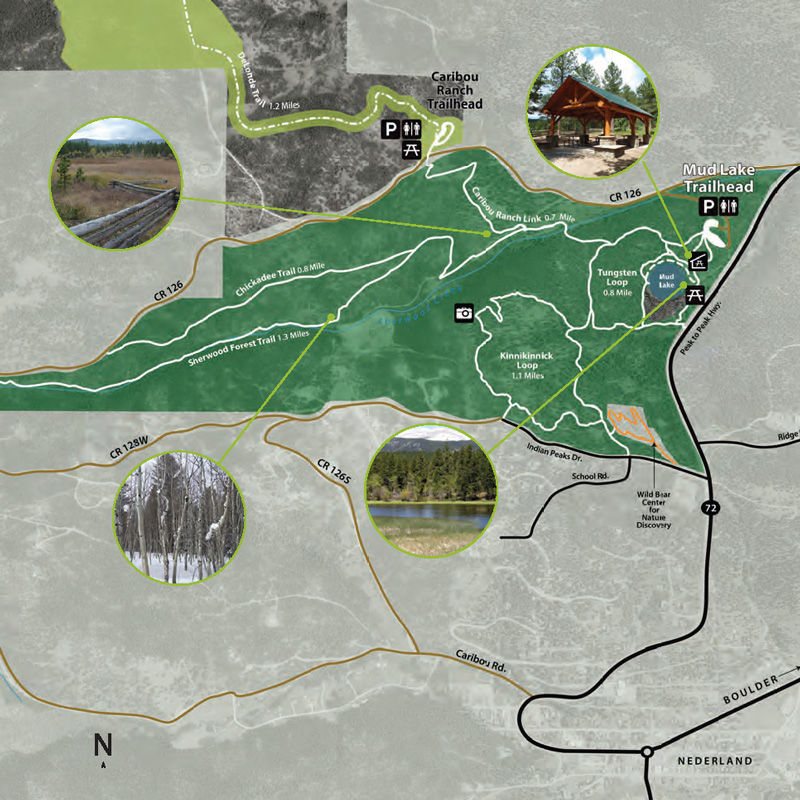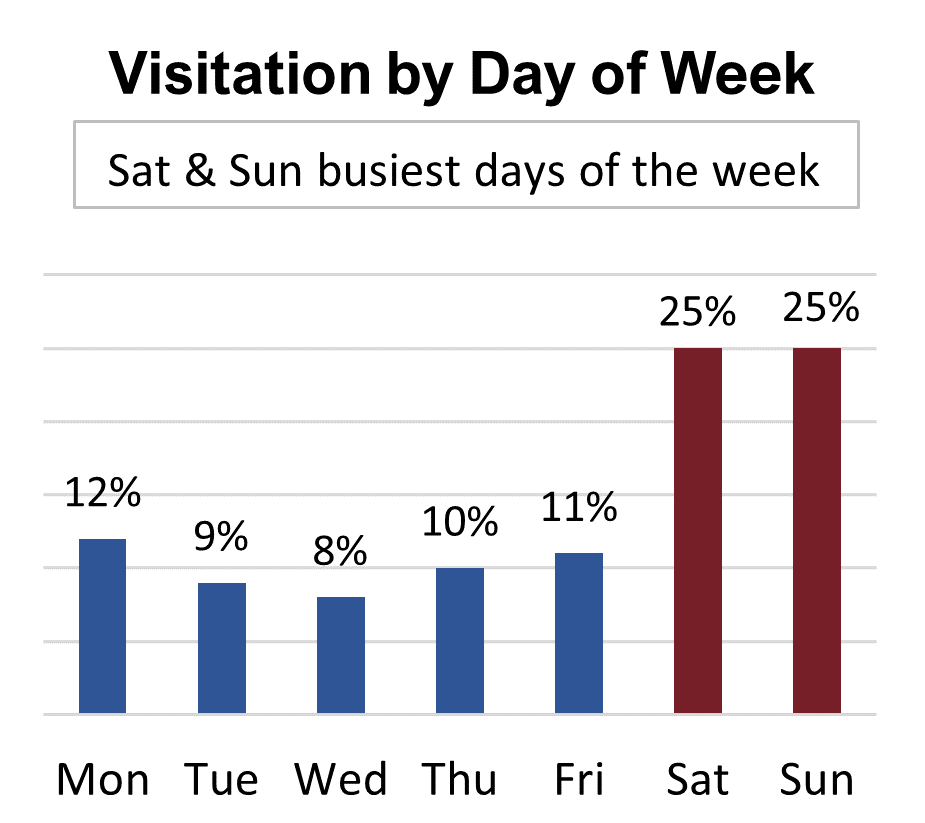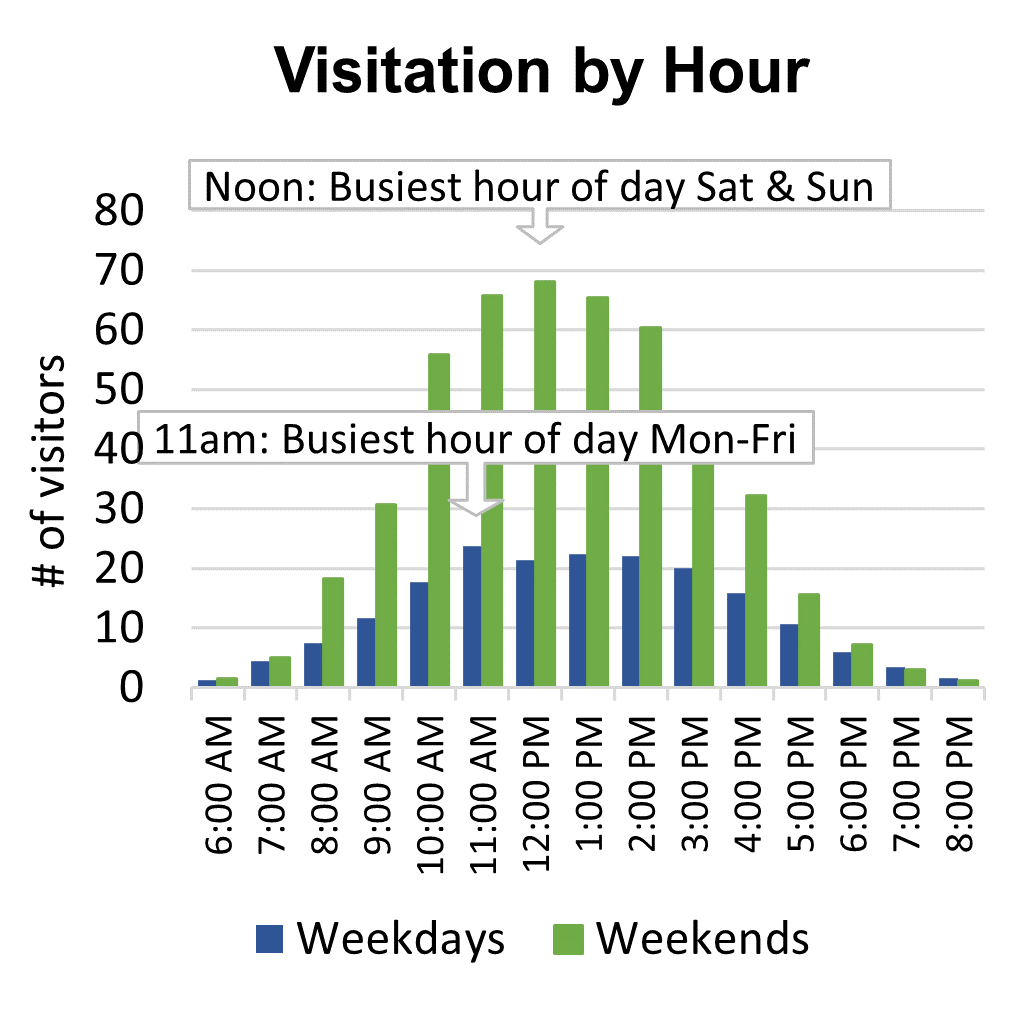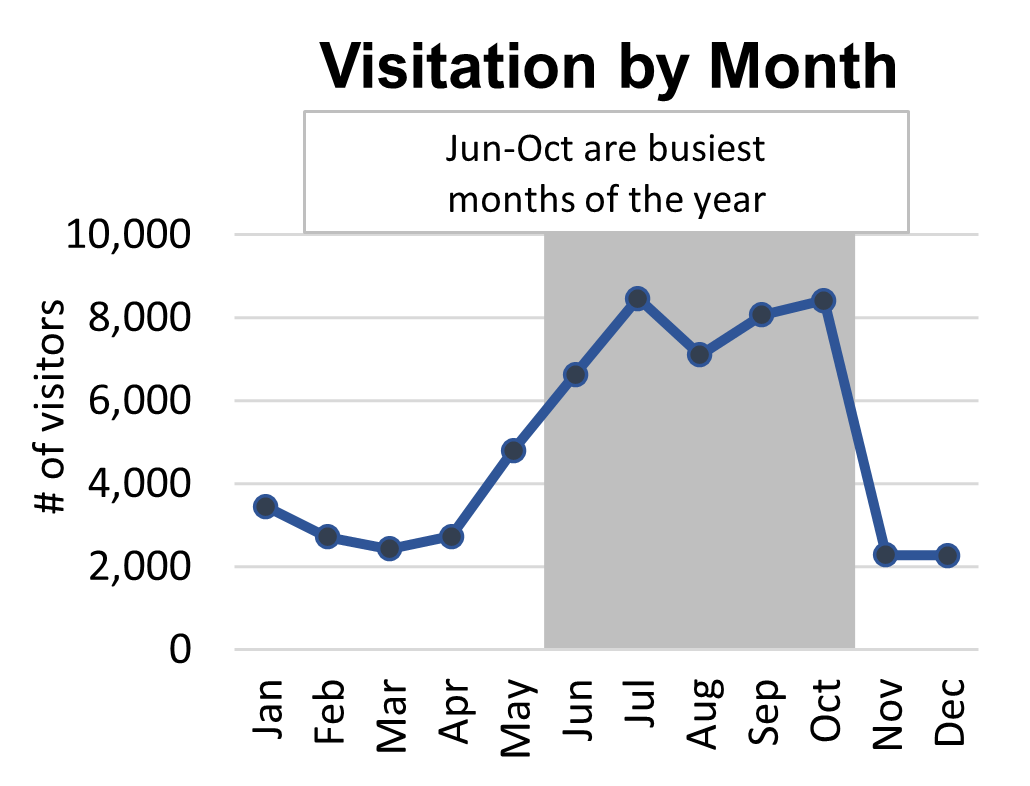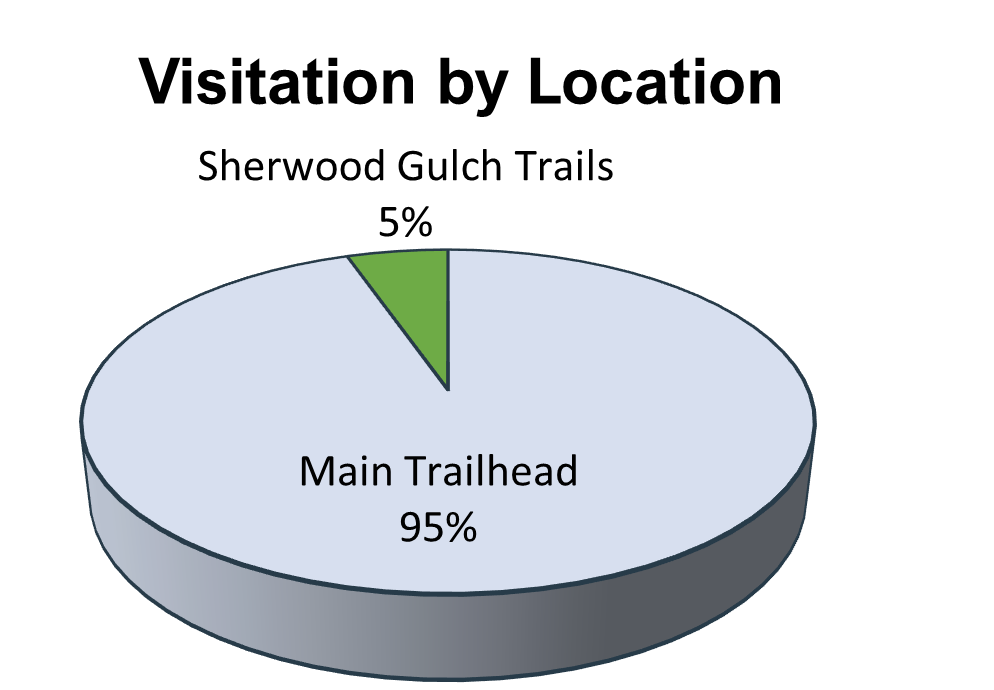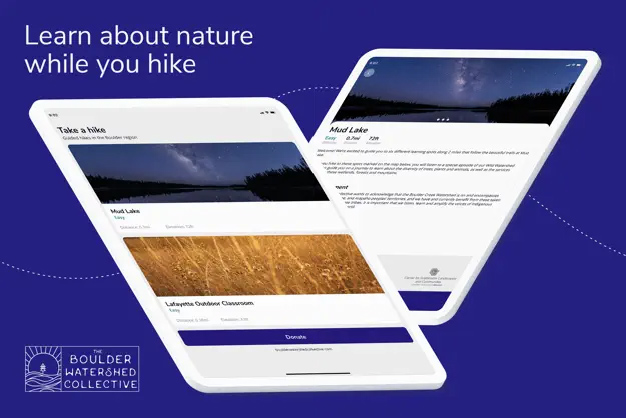Explore the beauty of a high-altitude reflective pool and nearby forest—the perfect learning environment for naturalists of all ages.
Mud Lake
Rules & Regulations

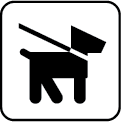
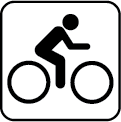
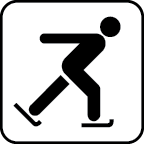
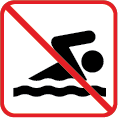
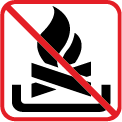

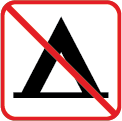
Trailhead Amenities
Audio Guided Hiking App
The Boulder Watershed Collective created a smartphone app for Mud Lake. Much like an audio guided museum experience, the app leads you to designated stopping points along the trail. Hike at your own pace while you learn, explore, and interact with the surrounding environment.
Learn more about Take-a-Hike.
Fishing
- Fishing is allowed, however, the lake is not stocked so catching fish is unlikely.
- Fishing on Open Space
The 231 acres of Mud Lake are located between 8,250 and 8,600 feet, in the montane life zone. At this altitude, beautiful summer wildflowers bloom later at Mud Lake than at lower elevations. The close proximity of water and forests make the property ideal for moose, but many species of mammals and birds call this property home.
Mammals
- Bobcat
- Chickaree
- Coyote
- Elk
- Least chipmunk
- Little brown bat
- Long-tailed weasel
- Montane vole
- Moose
- Mountain Lion
- Northern pocket gopher
- Snowshoe hare
Amphibians & Reptiles
- Striped chorus frog
- Western terrestrial garter snake
White Wildflowers
- Daisy fleabane (Erigeron spp)
- Mariposa lily (Calochortus gunnisonii)
- Milkvetch (Astragalus spp)
- Miners candle (Oreocarya virgata)
- Mouse ear chickweed Cerastium spp)
- Mountain pussytoes (Antennaria parvifolia)
- Northern bedstraw (Galium septentrionale)
- Porter aster (Aster porteri)
- White geranium (Geranium richardsonii)
- Wild strawberry (Fragaria vesca)
- Yarrow (Achillea lanulosa)
Yellow Wildflowers
- Blanket flower (Gaillardia aristata)
- Cinquefoil (Drymocallis spp, Potentilla spp)
- Common sunflower (Helianthus annuus)
- Golden banner (Thermopsis divaricarpa)
- Gumweed (Grindelia squarrosa)
- Hairy false golden aster (Heterotheca villosa)
- Heart-leaf arnica (Arnica cordifolia)
- Stonecrop (Amerosedum lanceolatum)
- Sulphur flower (Eriogonum umbellatum)
- Western wallflower (Erysimum asperum)
- Whiskbroom parsley (Harbouria trachypleura)
Pink, Orange & Red Wildflowers
- Lambert’s loco – Colorado loco (Oxytropis lambertii)
- Pinedrops (Pterospora andromedea)
- Scarlet paintbrush (Castilleja miniata)
- Spotted coralroot (Corallorizha maculata)
- Wild geranium (Geranium caespitosum)
Purple & Blue Wildflowers
- Colorado columbine (Aquilegia coerulea)
- Greenleaf penstemon (Penstemon virens)
- Common harebell (Campanula rotundifolia)
- One-sided penstemon (Penstemon secundiflorus)
- Rocky mountain iris (Iris missouriensis)
- Pasqueflower (Pulsatilla ludoviciana)
- Tall ciming bells (Mertensia ciliata)
Green Wildflowers
- Louisiana sage (Artemisia ludoviciana)
Shrubs
- Common juniper
- Kinnikinnick
- Wild rose
Trees
- Aspen
- Douglas fir
- Lodgepole pine
- Ponderosa pine
Much of the ground at Mud Lake is made up of two kinds of rocks, Boulder Creek granodiorite and biotite (black mica) gneiss. These rocks formed beneath the earth’s surface around 1.7-1.8 billion years ago. At that time, the northern edge of the North American continent was found long the Wyoming-Colorado border, and an ocean lay to the south. The collision of the oceanic and North American plates produced extreme heat and pressure that created these igneous and metamorphic rocks. Many periods of uplift and erosion exposed these rocks at the surface where we see them today.
The Lake
Mud Lake, at one time called Muskee Lake, was once thought to be a crater formed by a meteorite. A study funded by the Town of Nederland and the Colorado Geological Survey in 2001 concluded that it is more likely of human origin.
Scientific Studies
In 1947, researchers found some tiger salamanders at Mud Lake to be polydactylic, growing too many feet or toes during metamorphosis. This is considered the first record of mass polydactylism among amphibians.
Mining
The tungsten-mining boom, which began at the turn of the 20th century, heavily influenced use of the property. By 1904, the Wolf Tongue Mining Company and the Primos Chemical Company owned and mined much of the area.
Wild Bear Center
The Wild Bear Center for Nature Discovery, a non-profit environmental education organization, owns a 5-acre parcel at the site. Wild Bear currently uses the property for daytime, hands-on educational programs.









